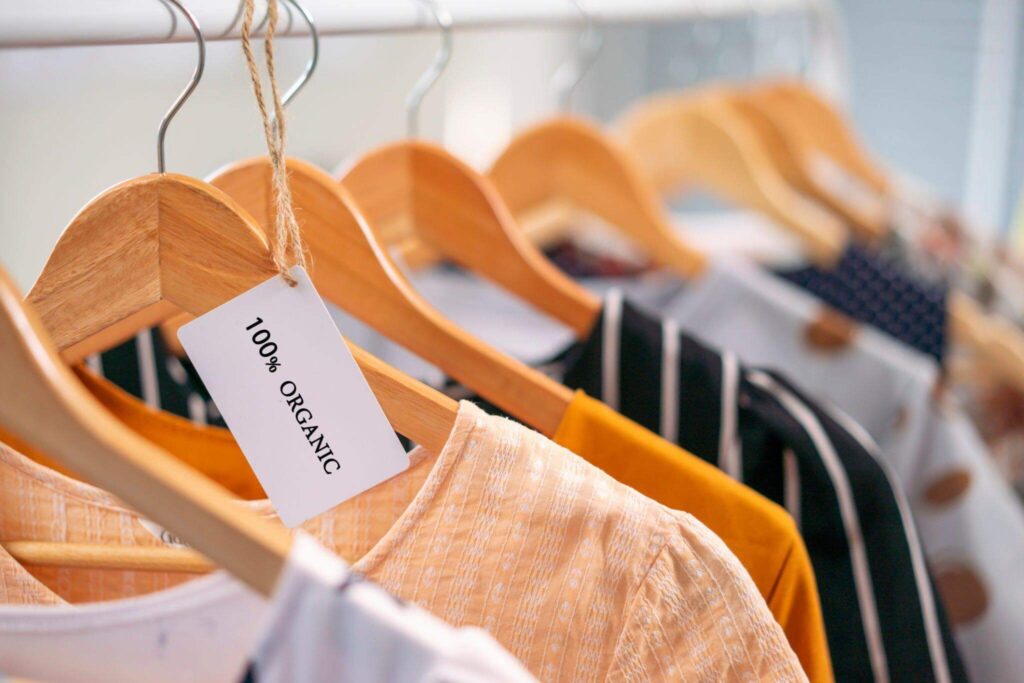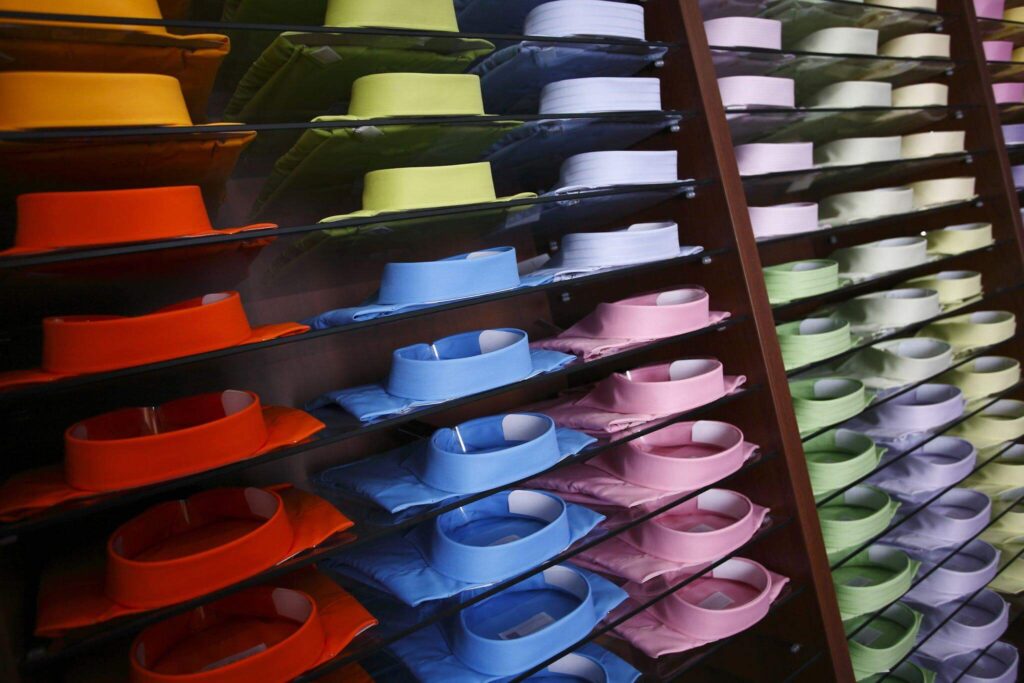Do you ever scan the price tag on a shirt and think, “Why is this so expensive?” Well, you’re not alone. In this blog, we will explain the pricing of the shirt and reveal the story of what goes into making the shirt. Understanding how much it costs to make a shirt isn’t just about budgeting smartly; it’s about becoming a more informed and savvy consumer.
So, get ready to join us on the journey as the fabric rolls to hang in your closet as we reveal the secrets to the value and cost of t-shirts. It’s a fashion adventure, and you’re the detective on the case!
The Components of Shirt Costs

Allow me to explain the cost of making a shirt simply! Similar to preparing your favorite meal, making a shirt requires some knowledge of certain ingredients, which are as follows:
Materials: The Stuff That Makes Your Shirt
Consider the materials as the elements that provide uniqueness to your shirt. This covers the threads, buttons, and fabric that keep everything together. Just like spices alter the flavor of your favorite recipe, different materials can make the shirt more soft or durable.
Labor: The Creative Makers Behind the Scenes
The folks that make your clothing come to life are the essence of labor. You have the artistic minds behind the shirt design. Then, some meticulously sew the fabric together after cutting it out. The garment is checked for quality to ensure it is flawless.
Overhead: The Costs of Keeping the Show Going
It covers every cost associated with operating the plant that produces shirts. Consider paying the rent, keeping the lights on, and ensuring the machinery functions properly. These factors pile up and have an impact on the cost of a t-shirt.
Marketing and Distribution: Getting Shirts to You
The route the shirt takes from production to the retailer or your home is the focus of marketing and distribution. This covers branding, advertising, and other necessary actions to ensure you are aware of and can purchase the shirt.
The Real Cost To Make T-Shirts (In Numbers)

Raw Materials
When you think about how much a shirt costs, first and foremost think of the materials of a shirt as its building blocks. The fabric determines the shirt’s appearance and texture. Buttons and thread add the finishing touches, so it’s not just about the fabric. Choosing higher-quality fabric is similar to selecting organic ingredients for your food; the difference is noticeable, but the cost is higher.
An expensive garment may look nicer with fancy buttons and stitching. In other words, the shirt journey starts with the materials. Raw Materials can cost $1.50 – $ 3.59 per shirt, depending on the level of fancy you want to add.
Labor
The process of making shirts is powered by labor. A shirt is made through various production phases, from design to cutting and sewing. Expert labor can influence the quality of the shirt, much like having a skilled chef in the kitchen.
However, we must also consider the people who make the shirts. At the same time, they may come at a higher cost, and safe working conditions are vital. Labor wages can be as low as $0.19 – $2.10 per shirt. The cost of making a t-shirt is heavily influenced by labor factors.
Overhead Costs
The hidden expenses associated with operating a factory are similar to overhead costs. The plant runs on all its costs, including rent and electricity bills. Another aspect is the factory’s location. The high cost of certain locations may impact the shirt’s price. The average cost of shirts is kept low by an effective factory. The overhead costs can vary from $0.29 – $1.12 per shirt.
Marketing and Distribution
Distribution and marketing move the shirts from the manufacturer into your wardrobe. It consists of packing to keep it safe, advertising to let you know it exists, and branding to make the clothing seem good.
Costs associated with the supply chain, including shipping and shirt storage, are essential elements that contribute to the overall cost of making t-shirts. All these costs can sum up to around $5.39 – $6.00 per shirt.
Want To Create Clothing Lines Customers Love?
Partner With Our Manufacturing Experts Today!
Get A Free Quote!Hidden Costs
There are now a few hidden expenses to consider in the total cost of making a shirt. To ensure that the shirt is flawless, quality control is integral, although it comes at a slight cost. Costs of t-shirts may vary depending on the regulations and certifications the shirt-making process must adhere to.
Furthermore, we must remember to treat the earth with kindness. Certain companies prioritize producing eco-friendly shirts, which may also impact the cost. These unstated expenses are kept a secret.
The Cost of Printing on T-Shirts

T-Shirt Printing Cost Depends On Order Quantity
Quantity is crucial when figuring out how much T-shirt printing will cost. Retail prices should be expected if you’re buying a modest quantity; budget between $20 and $30 per shirt.
Now, if you want to manufacture a T-shirt for yourself, this pricing range would be ideal. However, it’s incredibly inefficient if you intend to distribute or sell them. You will pay between $5 and $10 per shirt if you purchase 50 or more; if you order more than 100, the average cost of a t-shirt is closer to $5.
Therefore, it’s best to optimize your purchase but proceed cautiously. You can end up losing money if you purchase way too many. This is particularly crucial if you intend to charge your organization’s members for their shirts or if you’re selling them.
Extra Features Cost Extra Money
When considering how much a shirt costs to make, it’s important to note that white T-shirts will be the least expensive. Regretfully, it may not add much to the uniqueness of your T-shirt. It’s not a smart idea to use these shirts for advertising.
Thus, think about spending extra to print on colorful shirts. In smaller quantities, the price difference is $5; in larger numbers, it is $1. Ensure to inquire about prices before placing an order because not all companies charge more for colored shirts.
For those wondering how much t-shirts cost, keep in mind that most companies charge extra for printing in several ink colors, and utilizing two or more colors might add $2–$3 to the cost of your T-shirt. Therefore, it’s advisable to stick with a simple yet eye-catching design.
If you opt to have a design printed on both the front and the back of the T-shirt, your custom T-shirt price will increase by approximately $5 for each shirt. The advantage of this approach is that your design will be visible regardless of the person’s orientation, but it does come at an additional cost.
Shipping Is, Of Course, Not To Be Overlooked!
When assessing how much t-shirts cost, it’s worth noting that the majority of online T-shirt designers provide free shipping. However, there’s a catch – the shipping charge is typically integrated into the shirt’s price.
While free shipping may seem tempting, it’s essential to consider the overall cost. Sometimes, it might be more economical to pay for shipping if it results in a lower individual cost per T-shirt. Before making any selections, ensure you have calculated all your options regarding how much t-shirts cost.
Is It Profitable To Make T-shirts?

The profitability of making T-shirts can vary significantly depending on various factors, including the scale of production, the cost of materials and labor, the pricing strategy, and the target market. Here are some considerations:
Economies of Scale: Large-scale production typically leads to lower per-unit production costs. If you can produce T-shirts in bulk, your profit margins may be more favorable.
Material Costs: The cost of materials, such as fabric and printing materials, can greatly affect profitability. Sourcing cost-effective, high-quality materials is essential.
Labor Costs: Labor costs, including design, cutting, sewing, and quality control, play a significant role. Efficient production processes and skilled labor can help control costs.
Pricing Strategy: How you price your T-shirts is crucial. Setting a price that covers your costs, provides a profit margin, and remains competitive in the market is a balancing act.
Competition: The level of competition in the T-shirt market can impact profitability. Entering a highly competitive market may require more aggressive pricing and marketing strategies.
Niche and Target Market: Identifying a niche market or unique selling proposition (USP) can lead to higher profitability. Catering to specific consumer needs or preferences can command higher prices.
Distribution and Sales Channels: Consider your distribution strategy. Selling directly to consumers through an e-commerce website or physical store may offer higher profit margins compared to selling wholesale.
Cost Management: Effective cost management, reducing waste, and optimizing operational efficiency can improve profitability.

How to Save on Shirt Costs
Now that we know the secret behind the cost of the shirt, let’s chat about how you can be a savvy shopper and save a few bucks while still looking good!
Quality over Quantity
Invest in a few stylish, long-lasting clothes instead of filling your closet with loads of cheap ones that wear out quickly. It’s like choosing a hearty and filling meal instead of a sweet treat.
Check the Fabric
When assessing how much to make a shirt, it’s wise to look for clothes made of durable, low-maintenance fabrics. Natural materials like cotton are often a safe bet. They are comfortable, breathable, and can withstand a lot of scouring and washes.
Explore Secondhand and Thrift Stores
Thrifting is not only budget-friendly but also environmentally conscious. You can find unique-lined shirts in thrift stores as they save the planet a little.
Go for Sustainable Brands
If you are friendly to nature and the environment, consider brands focusing on sustainable and ethical production. Yes, they may cost a little more than the average shirt cost, but you’re contributing to a greener future and getting a better-quality shirt.
Learn Basic Sewing Skills
For one missing button or a small tear, you don’t have to say goodbye to your favorite shirt. Learning basic sewing techniques can save you from constantly buying new clothes.
Take Good Care
To make the most of your clothing and minimize the average cost of clothes, it’s essential to take good care of your shirts by following the care instructions. Properly washing, drying, and storing them can extend their shelf life and help you get more value from your wardrobe.
DIY Customization
Want a different shirt? Buy a plain, cheap one and add your personal touch with fabric paint, ribbons, or embroidery. It’s fun, creative and economical.
Putting It All Together
Now that we’ve explored the multifaceted process of making shirts and how it affects the price, let’s move on to the next fascinating point. In summary, there are numerous factors that contribute to the cost of making shirts and the cost to make a sweatshirt, from the fabric and thread to labor, overhead costs, marketing, and even hidden expenses. Determining the true value of a shirt or sweatshirt can be a complex task, as each piece of the puzzle plays a crucial role in solving the overall cost.
It’s important to recognize that being an informed consumer extends beyond saving money; it’s about making choices that align with your values. So, the next time you pick up a shirt or a sweatshirt, take a moment to ponder how far it traveled to reach you. By considering the broader implications of your choices, you’ll not only look good but also feel good about your purchase.
Ready to make savvy wardrobe choices? Explore more insights into the cost of clothing manufacturing and be a conscious consumer. It’s your style, your values, and your impact!







